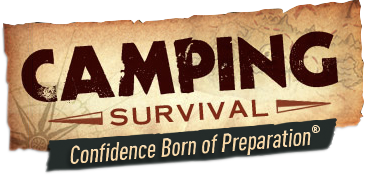
When You Need To "Shelter In Place"
Shelter in place means staying indoors until you are given an “all clear” or told to evacuate the area. There are many reasons you are asked to shelter in place including an active shooter, tornado, or chemical, radiological, biohazard, and more.
Stay Put
If officials tell you to “stay put” you will need to take heed immediately. Get indoors, make sure everyone in your family, including pets are accounted for, and listen to local radio or television stations for instructions. In the meantime:
- Gather your family, pets, and all your emergency supplies together in one area.
- Consider one area to be the “safe area” where everyone stays together, the radio or television is on and designate one person to stay on top of the immediate situation.
- Stay in this area until you are officially told the situation is clear and you are safe to leave.
Stay in Touch

Once you are in a safe area, contact one person in your friends or family network to let them know you are alright, safe, and waiting for further information.
- Text or call your emergency contact and let them know exactly what is going on, where you are, and anything else you think they would need to know. Give them at least 2 phone numbers to contact you on in case one phone dies or becomes unusable.
- Utilize items that require charging as little as possible, including your phone. Nobody will be able to get in touch with you if your phone is dead.
- Make sure you designate at least one person to stay on top of any new information regarding the emergency and stay abreast of it yourself. Do not leave until you are told it is safe to do so.
- When told to evacuate the area, follow the instructions carefully on the path to take to leave. Don’t forget your emergency items such as food, clothing, water, etc.
Sealing a Room
If you are told to seal a room due to an emergency, follow these steps:
- Turn off anything that moves air like ceiling fans, air fresheners, etc.
- Make sure you close the damper on your fireplace.
- Move yourself and your loved ones and pets in an interior room of the house.
- Make sure you have all your emergency supplies in that room and ready to go in case you are told to evacuate.
- Put towels or blankets under the door and around windows to keep air from entering the room.
- Make sure you are listening to a radio, television tuned to local channels for further instructions on what to do and where to go.
Once you have been told it is safe, open all windows, turn on fans, and go outside to get some fresh air. Make sure you read FEMA’s Guidelines for Staying Put.
How to prepare to shelter in place in event of a Chemical attack or Leak
Choose a room in the interior of your home with a water supply close to you. Make sure this room has as few windows as possible, and as few doors as possible. A room that has no doors leading outside is best, as well as one that has few windows. Being on the top floor of your home is best, and is different than the sheltering in place used for tornadoes or nuclear or radiological events where you should be at the lowest point of your home.
Sheltering in a vehicle is not advised due to the air circulation problem inside of them. If possible, get into a building.
If you do happen to be home during this event, having these things on hand would be beneficial:
- First aid kit
- Flashlight, battery-powered radio, and extra batteries for both
- A working telephone
- Food and bottled water. Store 1 gallon of water per person in plastic bottles as well as ready-to-eat foods that will keep without refrigeration in the shelter-in-place room. If you do not have bottled water, or if you run out, you can drink water from a toilet tank (not from a toilet bowl). Do not drink water from the tap.
- Duct tape and scissors.
- Towels and plastic sheeting (heavier than kitchen wrap). You may wish to cut your plastic sheeting to fit your windows and doors before any emergency occurs.
Seal the room by taping plastic over any windows in the room. Use duct tape around the windows and doors and make an unbroken seal. Use the tape over any vents into the room and seal any electrical outlets or other openings.
Staying Put in Your Vehicle
As we’ve stated, it is not recommended to stay in your vehicle during this type of an emergency, but sometimes that cannot be avoided. If you cannot pull over and get into a public building, then follow these steps for staying in your vehicle:
- Stop your vehicle on the side of the road with your emergency flashers on so you are more visible. Somewhere shady is best if it is hot outside.
- Do not move until you are told it is safe to do so.
- Using as little power as possible, listen to the radio in your car since it doesn’t take much battery power to run. Make sure you listen for an all clear from officials before you return to driving.
- Even when you are told it is safe, make sure you listen to the radio for further details on the emergency in case something happens suddenly and you need to stop again.
FEMA has a free PDF booklet available that has detailed information on be prepared.

